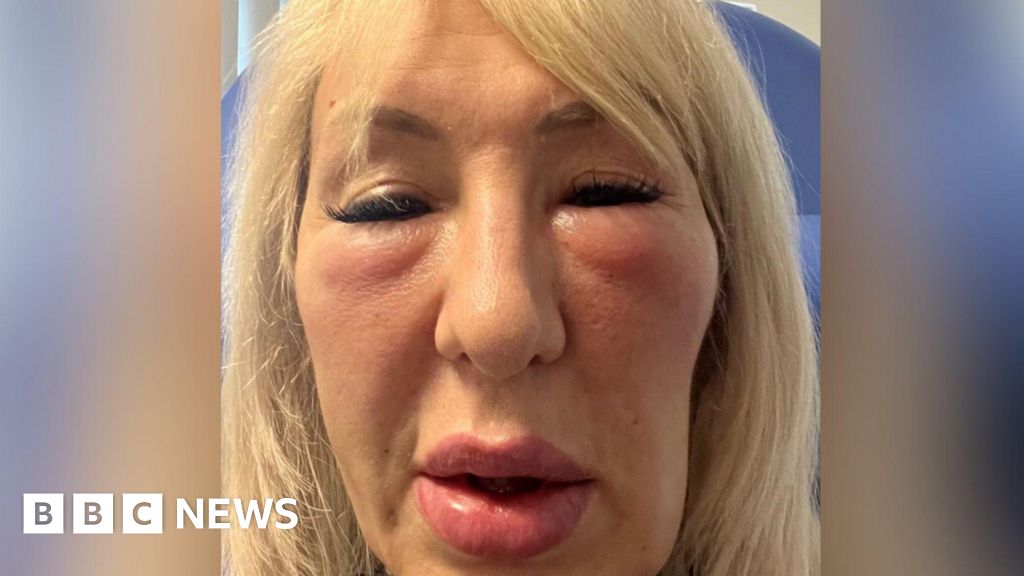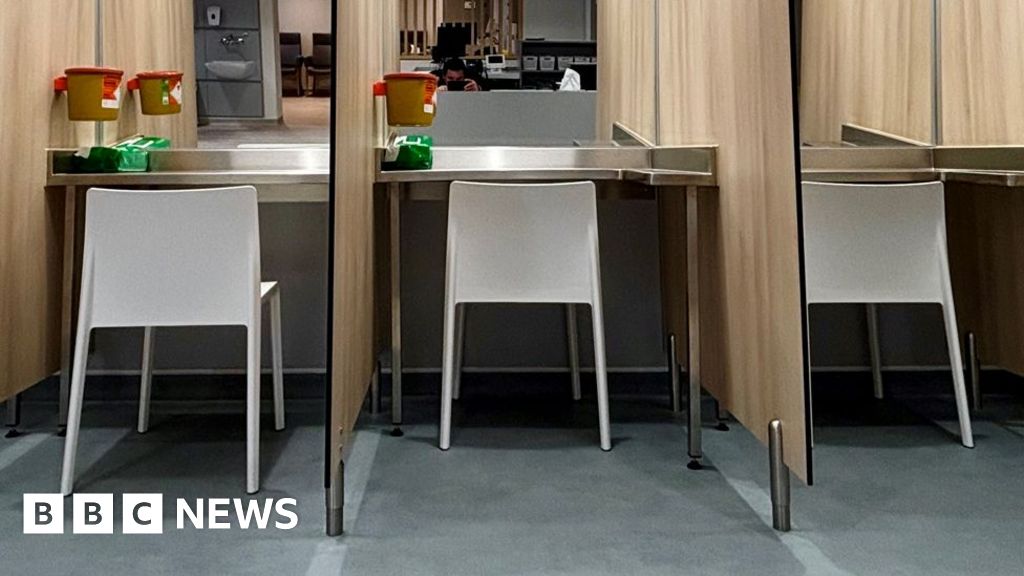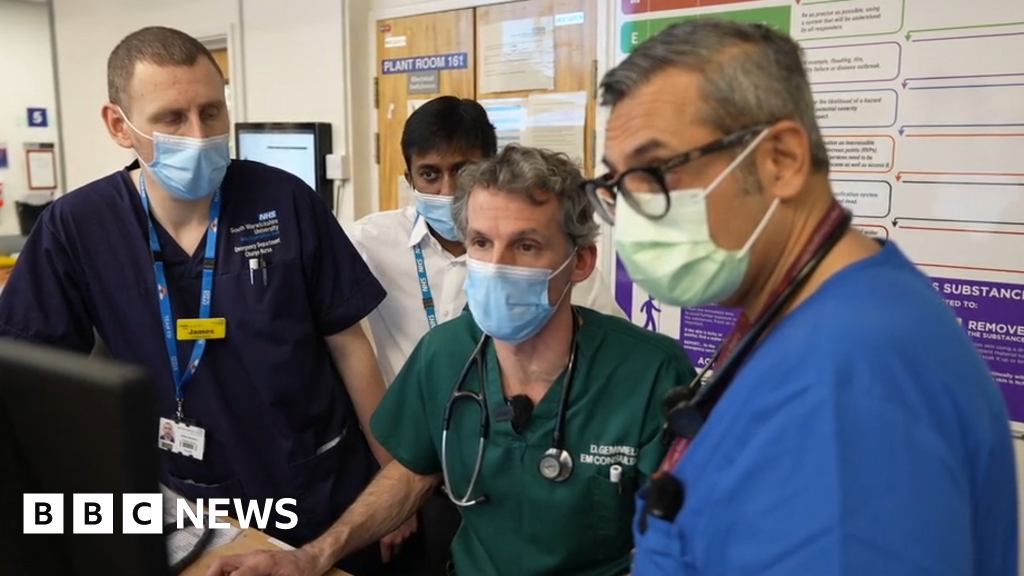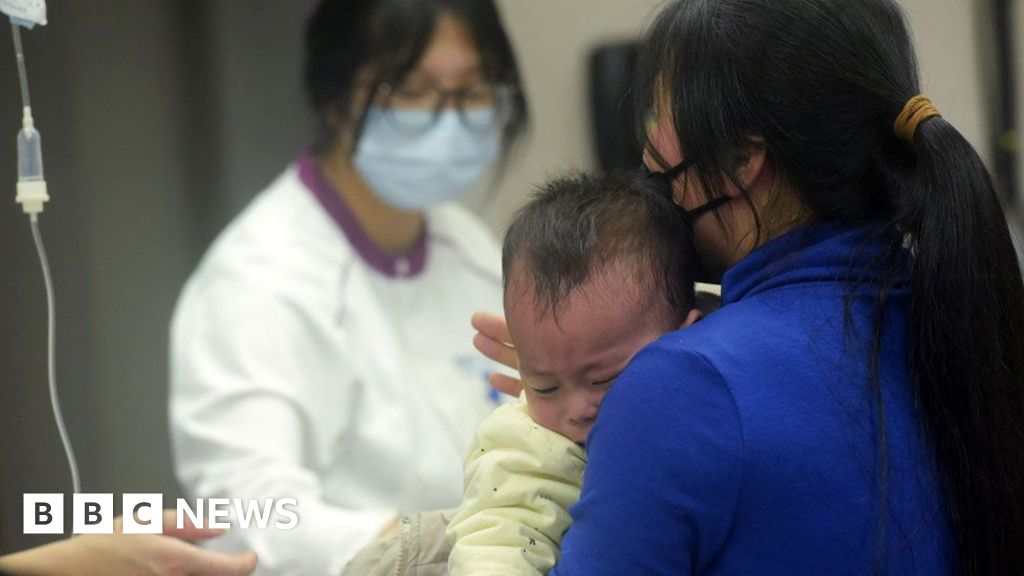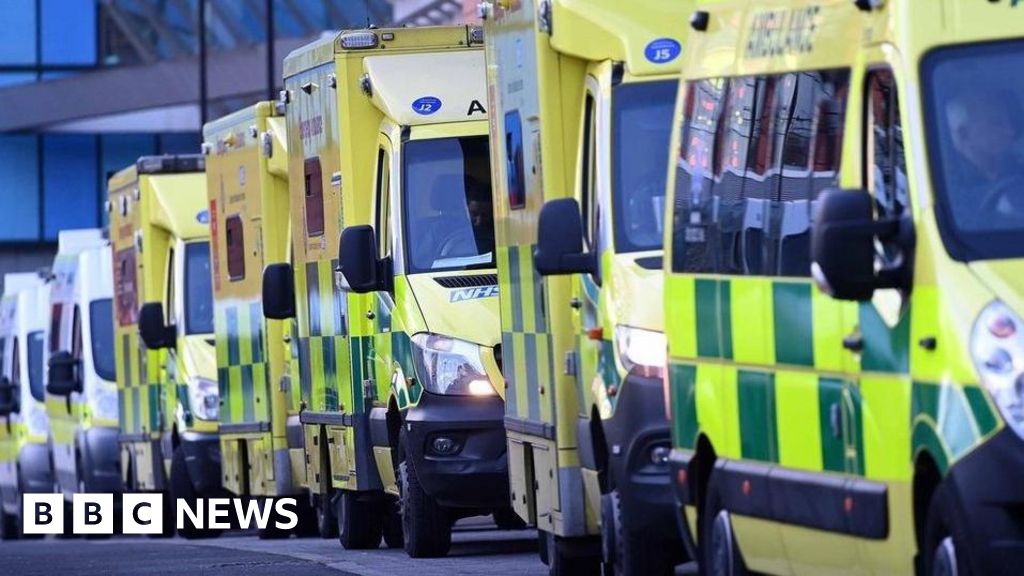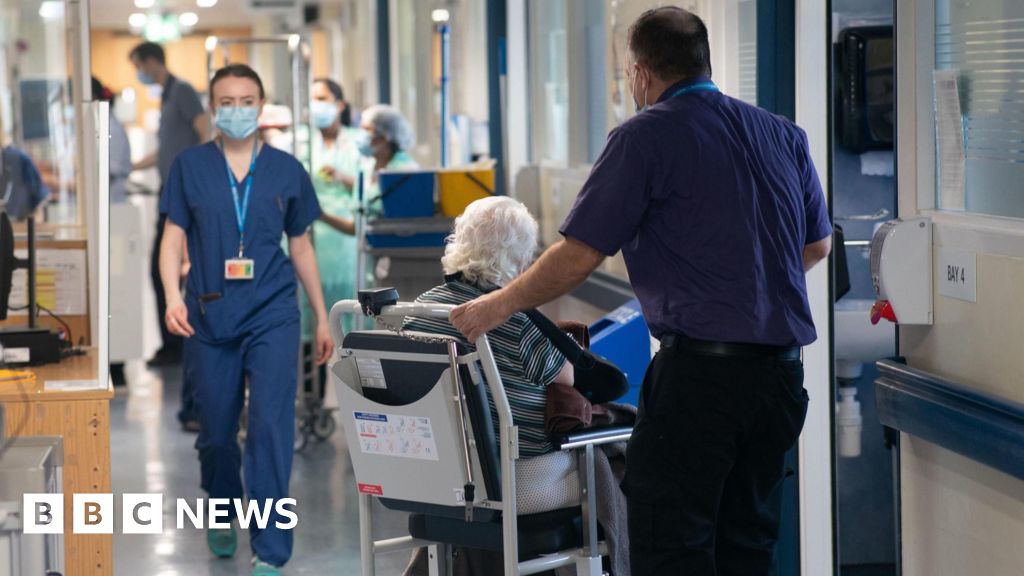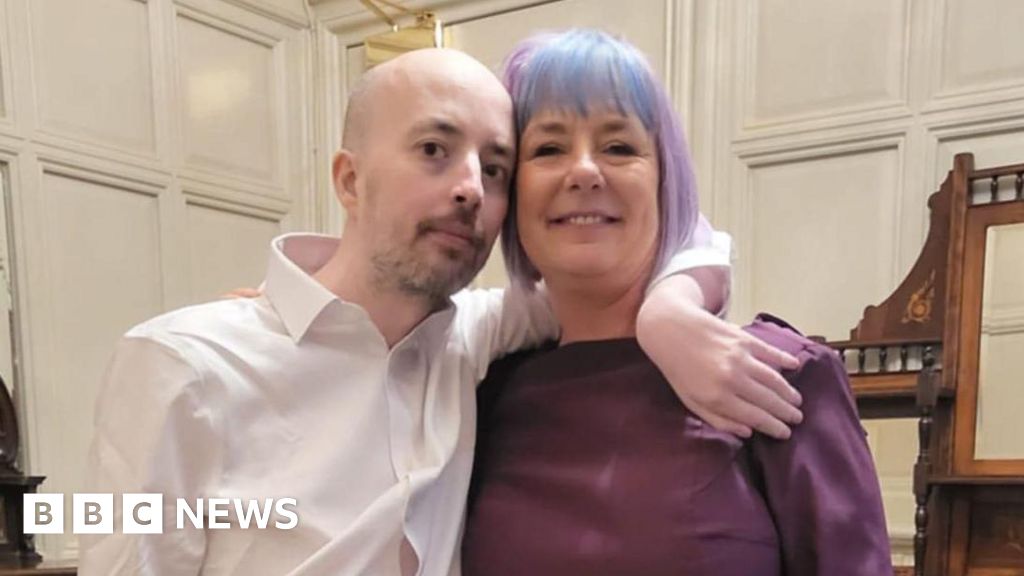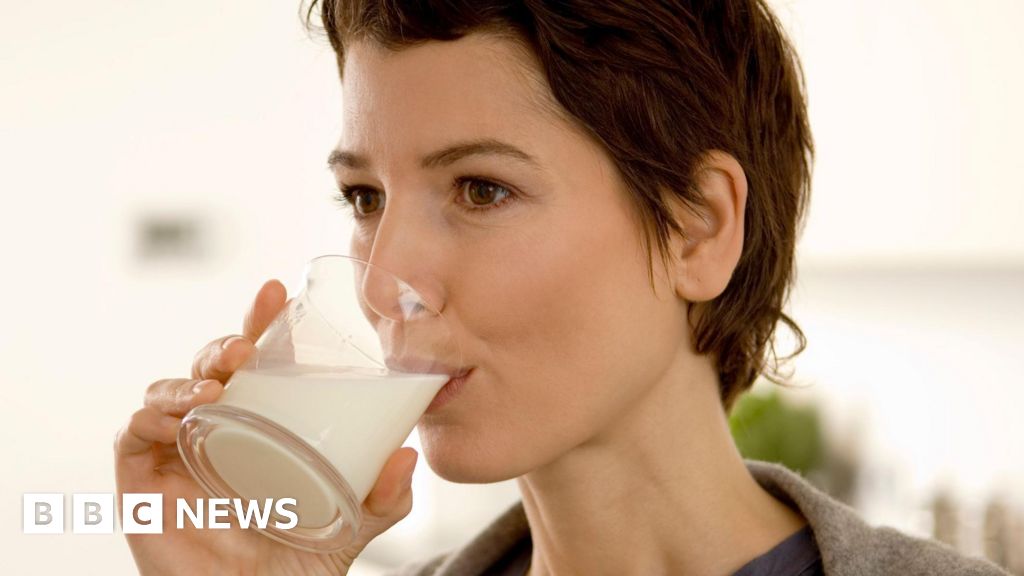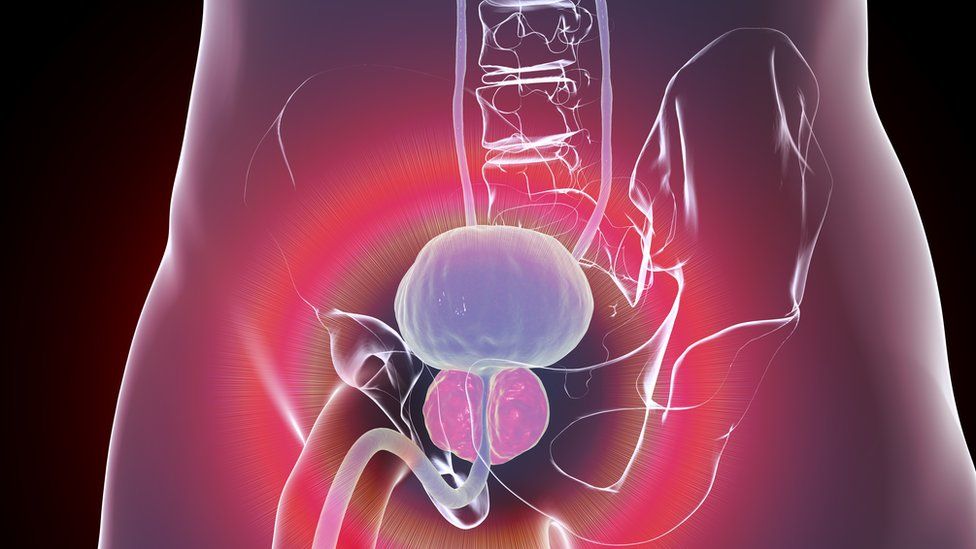 Image source, Getty Images
Image source, Getty Images
An enlarged prostate (pink) sitting below the bladder (purple)
By Michelle Roberts
Digital health editor
There has been a surge in searches for prostate enlargement after the King divulged his diagnosis, figures show.
There were 16,410 visits to the NHS website page on Wednesday - an average of one visit every five seconds - compared to 1,414 visits on Tuesday, NHS England officials say.
The rise comes after it was announced the King would receive treatment for the benign condition next week.
Buckingham Palace has confirmed he definitely does not have cancer.
Charities and doctors have welcomed the King going public and sharing details about his prostate problem, to encourage men with similar symptoms to ask their doctor for a check-up.
Ian Eardley, a consultant urological surgeon in Leeds and the national clinical director for the NHS, said the King's diagnosis becoming public knowledge would "lead to more men seeking help."
He added it would also alleviate stigma surrounding the condition, explaining that prostate problems have traditionally had a "perception of being something you don't want to talk about" and "actually to be able to talk about it is a good thing, not least because the whole stack of things that we can do".
Buckingham Palace said King Charles would undergo a "corrective procedure" next week
Many men develop an enlarged prostate as they age.
An enlarged prostate is not usually a serious threat to health but can cause troubling symptoms needing treatment.
What is an enlarged prostate?
The prostate is a gland that should be about the size of a walnut.
It sits at the base of the bladder - the organ that stores urine.
When men urinate, the urine flows into a long tube called the urethra, which passes through the centre of the prostate.
An enlarged prostate hugs that pipe tighter and can start to restrict the flow.
All prostates grow as men age.
How quickly varies from person to person - and it will not always cause an issue.
But more than one in three men over the age of 50 will have some symptoms of prostate enlargement.
What are the symptoms of an enlarged prostate?
Ones to look out for include:
- urinating more frequently, waking up at night to urinate or needing to urinate urgently
- feeling the bladder is not emptying fully
- weak flow when urinating
- having to wait for urine to flow
- erection and ejaculation problems
Could it be prostate cancer?
Doctors call the condition benign prostate enlargement.
Benign means a growth that is not cancer.
The risk of prostate cancer is no greater for men with an enlarged prostate.
But the chances of developing prostate cancer also increase with age - and the symptoms can be similar.
So those with prostate problems should ask their doctor for a check-up.
What will a check-up involve?
The doctor will ask about symptoms and probably offer a physical rectal exam.
They put a gloved finger up through the anus to feel the prostate from inside the body.
This can be uncomfortable, and might make the patient feel they want to urinate, but should not hurt.
Doctors know some people can feel embarrassed - but it is a common procedure and takes just a few minutes.
They may also test samples of:
- blood for prostate-specific antigen (PSA) - low levels can help rule out cancer
- urine to check if the symptoms might be due to an infection or something else
What is the treatment for an enlarged prostate?
Symptoms are unlikely to disappear untreated - but, according to the NHS, half of men diagnosed with an enlarged prostate manage them without drugs or surgery, by:
- drinking less alcohol and avoiding caffeine but still drinking water to stay well hydrated
- avoiding too much fluid before bedtime
- eating more fibre - beans, bran and vegetables - to avoid constipation
- avoiding certain medicines - but only when recommended by their doctor
- exercising to strengthen pelvic-floor muscles
- wearing discreet pads inside underwear, to catch dribbles
Herbal supplements such as saw palmetto are not currently recommended, although some men say they work for them.
What drugs can treat it?
These are available on the NHS:
- tamsulosin, alfuzosin and silodosin - alpha blockers that relax the muscles of the prostate and bladder
- dutasteride and finasteride - alpha-reductase inhibitors that stop the prostate from growing and can even shrink it
Desmopressins slow night-time urine production and anti-cholinergic drugs can reduce urgency to urinate.
Most patients' symptoms are alleviated, according to the NHS, but there can be side effects.
What does surgery involve?
There are several types of surgery or procedures to shrink the prostate or widen the urethra that are available on the NHS.
Transurethral resection of the prostate (TURP) is done with the patient asleep under general anaesthetic and involves inserting a a very thin wire into the urethra. The wire is then to shave off bits of the prostate. There is also a similar procedure that uses a laser instead.
After both of these procedures, a catheter is fitted for a day or two, to collect urine while the patient recovers.
Some NHS hospitals offer aquablation, which uses pressurised water instead of a laser.
Others offer a steam treatment that takes about 20 minutes, under local anaesthetic, with the patient awake.
All procedures carry some risks.
Have you been affected by the issues raised in this story? Share your experiences by emailing haveyoursay@bbc.co.uk.
Please include a contact number if you are willing to speak to a BBC journalist. You can also get in touch in the following ways:
If you are reading this page and can't see the form you will need to visit the mobile version of the BBC website to submit your question or comment or you can email us at HaveYourSay@bbc.co.uk. Please include your name, age and location with any submission.
Related Internet Links
The BBC is not responsible for the content of external sites.
 (1).png)
 11 months ago
13
11 months ago
13
